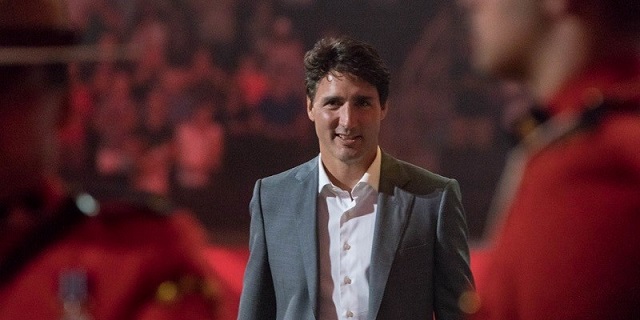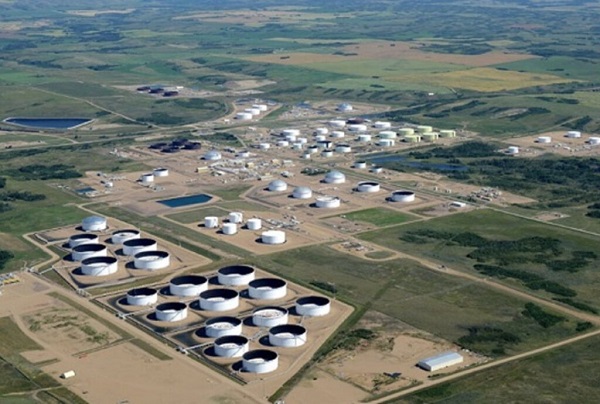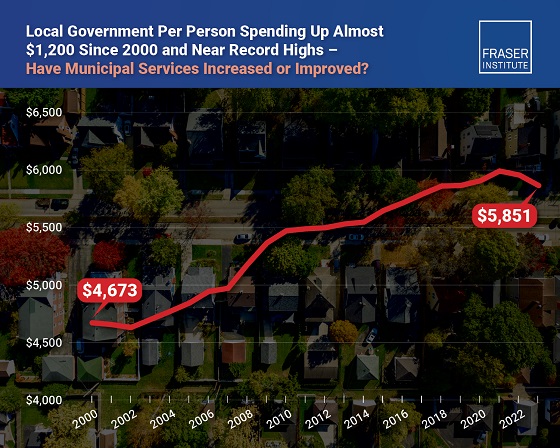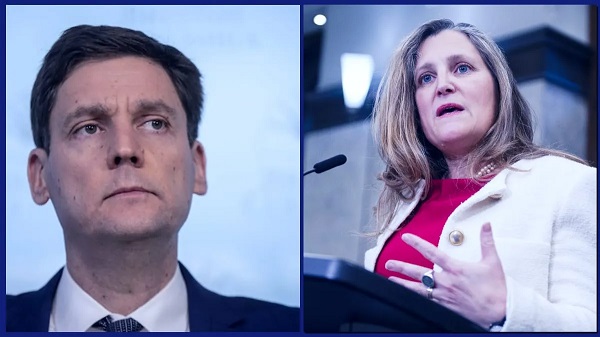Economy
Poor policies responsible for stagnant economy and deteriorating federal finances

From the Fraser Institute
By Jake Fuss and Jason Clemens
The Trudeau government was elected in 2015 based in part on a new approach to government policy, promising greater prosperity for Canadians through short-term deficit spending, lower taxes for most Canadians, and a more direct and active role for government in economic development. However, the result has been economic stagnation and a marked deterioration in the country’s finances. If Canada is to restore its economic and fiscal health, Ottawa must enact fundamental policy reform.
The Trudeau government has significantly increased spending from $256.2 billion in 2014-15 to a projected $449.8 billion in 2023-24 (excluding debt interest costs) to expand existing programs and create new programs.
In 2016, the government increased the top personal income tax rate on entrepreneurs, professionals and businessowners from 29 per cent to 33 per cent. Consequently, the combined top personal income tax rate (federal and provincial) now exceeds 50 per cent in eight provinces and the country’s average top combined rate in 2022 ranked fifth-highest among 38 OECD countries. This represents a serious competitive challenge for Canada to attract and retain entrepreneurs, investors and skilled professionals (e.g. doctors) we badly need.
And while the Trudeau government reduced the middle personal income tax rate, it also eliminated several tax credits. Due to the combination of these two policy changes, 86 per cent of middle-income families now pay higher personal income taxes.
The Trudeau government also borrowed to help finance new spending, triggering a string of budget deficits. As a result, federal gross debt has ballooned to $1.9 trillion (2022-23) and will reach a projected $2.4 trillion by 2027-28, fueling a marked growth in interest costs, which now consume substantial levels of revenue unavailable for government services or tax reduction.
Simply put, the Trudeau government has produced large increases in government spending, taxes and borrowing, which have not translated into a more robust and vibrant economy.
For example, from 2013 to 2022, growth in per-person GDP, the broadest measure of living standards, was the weakest on record since the 1930s. Prospects for the future, given current policies, are not encouraging. According to the OECD, Canada will record the lowest rate of per-person GDP growth among 32 advanced economies during the periods 2020 to 2030 and 2030 to 2060. Countries such as Estonia, South Korea and New Zealand are expected to vault past Canada and achieve higher living standards by 2060.
Canada’s economic growth crisis is due in part to the decline in business investment, which is critical to increasing living standards because it equips workers with tools and technologies to produce more and provide higher-quality goods and services. The Trudeau government has dampened investment by increasing regulatory barriers, particularly in the energy and mining sectors, and running deficits, which imply tax increases in the future.
Business investment (inflation-adjusted, excluding residential construction) has declined by 1.8 per cent annually, on average, since 2014. Between 2014 and 2021, business investment per worker (inflation-adjusted, excluding residential construction) decreased by $3,676 in Canada compared to growth of $3,418 in the United States.
There’s reason for optimism, however, since many of Canada’s challenges are of Ottawa’s own making. The Chrétien Liberals in the 1990s faced many of the same challenges we do today. By shifting the focus to more prudent government spending, balanced budgets, debt reduction and competitive tax rates, the Chrétien Liberals—followed in large measure by the Harper Tories—paved the way for two decades of prosperity. To help foster greater prosperity for Canadians today and tomorrow, the federal government should learn from the Chrétien Liberals and Harper Tories and enact fundamental policy reform.
Authors:
Alberta
Pierre Poilievre – Per Capita, Hardisty, Alberta Is the Most Important Little Town In Canada

From Pierre Poilievre
Business
Why it’s time to repeal the oil tanker ban on B.C.’s north coast

The Port of Prince Rupert on the north coast of British Columbia. Photo courtesy Prince Rupert Port Authority
From the Canadian Energy Centre
By Will Gibson
Moratorium does little to improve marine safety while sending the wrong message to energy investors
In 2019, Martha Hall Findlay, then-CEO of the Canada West Foundation, penned a strongly worded op-ed in the Globe and Mail calling the federal ban of oil tankers on B.C.’s northern coast “un-Canadian.”
Six years later, her opinion hasn’t changed.
“It was bad legislation and the government should get rid of it,” said Hall Findlay, now director of the University of Calgary’s School of Public Policy.
The moratorium, known as Bill C-48, banned vessels carrying more than 12,500 tonnes of oil from accessing northern B.C. ports.
Targeting products from one sector in one area does little to achieve the goal of overall improved marine transport safety, she said.
“There are risks associated with any kind of transportation with any goods, and not all of them are with oil tankers. All that singling out one part of one coast did was prevent more oil and gas from being produced that could be shipped off that coast,” she said.
Hall Findlay is a former Liberal MP who served as Suncor Energy’s chief sustainability officer before taking on her role at the University of Calgary.
She sees an opportunity to remove the tanker moratorium in light of changing attitudes about resource development across Canada and a new federal government that has publicly committed to delivering nation-building energy projects.
“There’s a greater recognition in large portions of the public across the country, not just Alberta and Saskatchewan, that Canada is too dependent on the United States as the only customer for our energy products,” she said.
“There are better alternatives to C-48, such as setting aside what are called Particularly Sensitive Sea Areas, which have been established in areas such as the Great Barrier Reef and the Galapagos Islands.”
The Business Council of British Columbia, which represents more than 200 companies, post-secondary institutions and industry associations, echoes Hall Findlay’s call for the tanker ban to be repealed.
“Comparable shipments face no such restrictions on the East Coast,” said Denise Mullen, the council’s director of environment, sustainability and Indigenous relations.
“This unfair treatment reinforces Canada’s over-reliance on the U.S. market, where Canadian oil is sold at a discount, by restricting access to Asia-Pacific markets.
“This results in billions in lost government revenues and reduced private investment at a time when our economy can least afford it.”
The ban on tanker traffic specifically in northern B.C. doesn’t make sense given Canada already has strong marine safety regulations in place, Mullen said.
Notably, completion of the Trans Mountain Pipeline expansion in 2024 also doubled marine spill response capacity on Canada’s West Coast. A $170 million investment added new equipment, personnel and response bases in the Salish Sea.
“The [C-48] moratorium adds little real protection while sending a damaging message to global investors,” she said.
“This undermines the confidence needed for long-term investment in critical trade-enabling infrastructure.”
Indigenous Resource Network executive director John Desjarlais senses there’s an openness to revisiting the issue for Indigenous communities.
“Sentiment has changed and evolved in the past six years,” he said.
“There are still concerns and trust that needs to be built. But there’s also a recognition that in addition to environmental impacts, [there are] consequences of not doing it in terms of an economic impact as well as the cascading socio-economic impacts.”
The ban effectively killed the proposed $16-billion Eagle Spirit project, an Indigenous-led pipeline that would have shipped oil from northern Alberta to a tidewater export terminal at Prince Rupert, B.C.
“When you have Indigenous participants who want to advance these projects, the moratorium needs to be revisited,” Desjarlais said.
He notes that in the six years since the tanker ban went into effect, there are growing partnerships between B.C. First Nations and the energy industry, including the Haisla Nation’s Cedar LNG project and the Nisga’a Nation’s Ksi Lisims LNG project.
This has deepened the trust that projects can mitigate risks while providing economic reconciliation and benefits to communities, Dejarlais said.
“Industry has come leaps and bounds in terms of working with First Nations,” he said.
“They are treating the rights of the communities they work with appropriately in terms of project risk and returns.”
Hall Findlay is cautiously optimistic that the tanker ban will be replaced by more appropriate legislation.
“I’m hoping that we see the revival of a federal government that brings pragmatism to governing the country,” she said.
“Repealing C-48 would be a sign of that happening.”
-

 Crime2 days ago
Crime2 days agoNational Health Care Fraud Takedown Results in 324 Defendants Charged in Connection with Over $14.6 Billion in Alleged Fraud
-

 Health2 days ago
Health2 days agoRFK Jr. Unloads Disturbing Vaccine Secrets on Tucker—And Surprises Everyone on Trump
-

 Business1 day ago
Business1 day agoElon Musk slams Trump’s ‘Big Beautiful Bill,’ calls for new political party
-

 Business13 hours ago
Business13 hours agoWhy it’s time to repeal the oil tanker ban on B.C.’s north coast
-

 Censorship Industrial Complex1 day ago
Censorship Industrial Complex1 day agoGlobal media alliance colluded with foreign nations to crush free speech in America: House report
-

 International21 hours ago
International21 hours agoCBS settles with Trump over doctored 60 Minutes Harris interview
-

 Business13 hours ago
Business13 hours agoLatest shakedown attempt by Canada Post underscores need for privatization
-

 Energy13 hours ago
Energy13 hours agoIf Canada Wants to be the World’s Energy Partner, We Need to Act Like It








